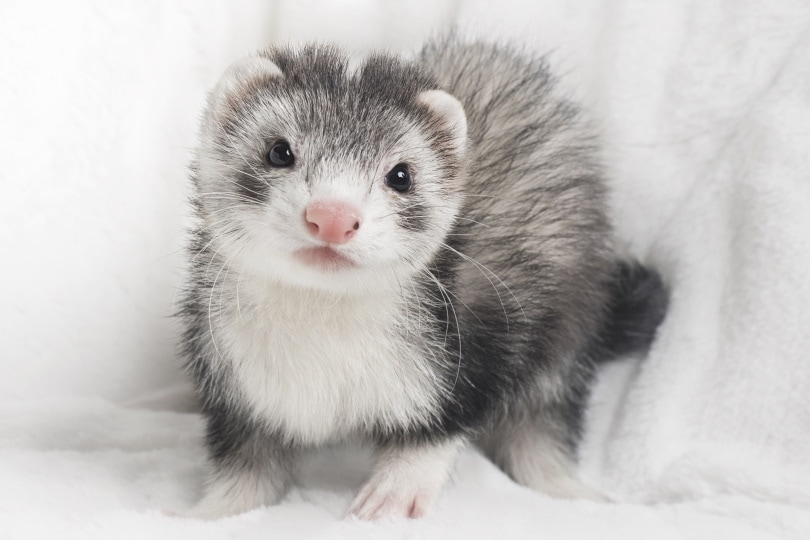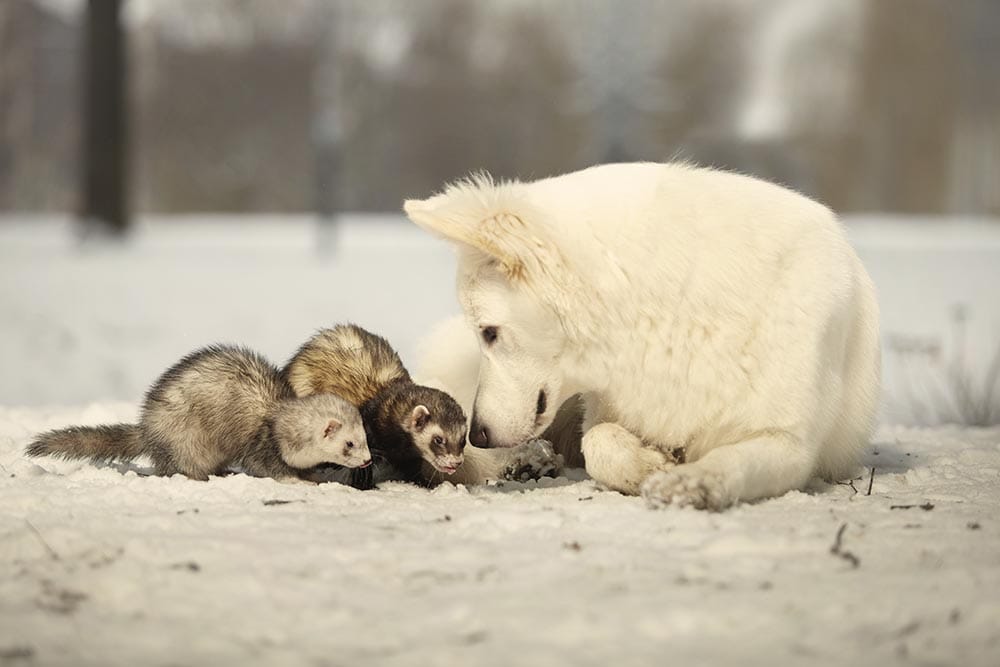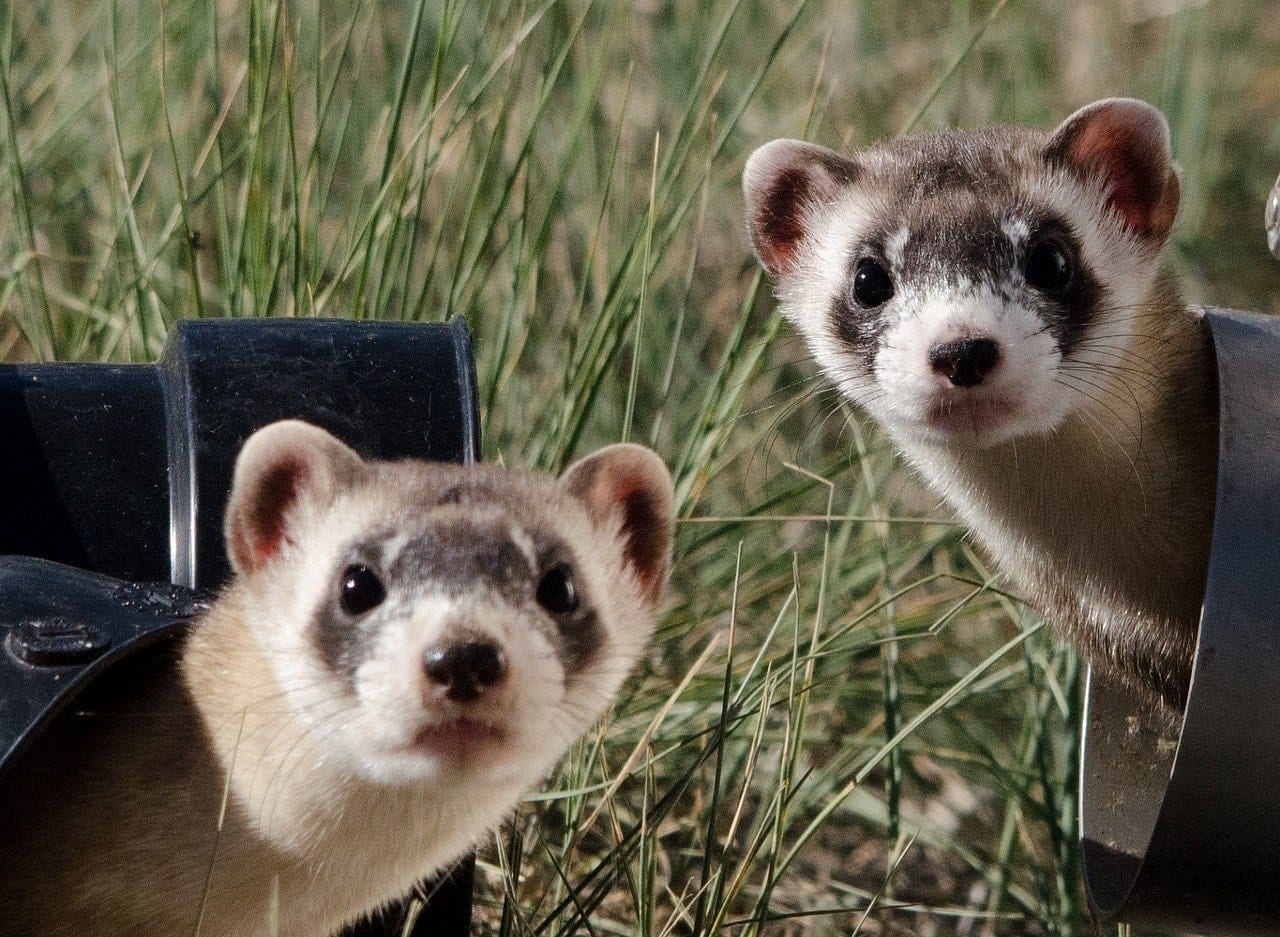
Stoats and ferrets, along with weasels, minks, and badgers, belong to the same family of carnivorous mammals called Mustelids. This family of mammals has similar physical characteristics, including elongated bodies, short legs, and thick fur. They are also all typically nocturnal animals that prefer to live solitary lives.
Stoats and ferrets share several physical traits that can lead many to believe that they are the same animal! Apart from their physical characteristics, though, the two have noticeable personality differences and are different from each other in character and temperament.
In this article, we take a closer look at each animal to find out what makes them truly unique.
 Visual Differences
Visual Differences

While both stoats and ferrets have the characteristic short legs, thick coats, elongated bodies, and short, rounded ears typical of the Mustelid family, upon closer inspection, the two are fairly simple to tell apart. For one thing, the ferret is far longer than the stoat and almost twice as large and has a characteristic black mask, black feet, and black-tipped tail. The ferret’s tail is also shorter than the stoat’s in comparison to its body.
At a Glance
 Stoat Overview
Stoat Overview
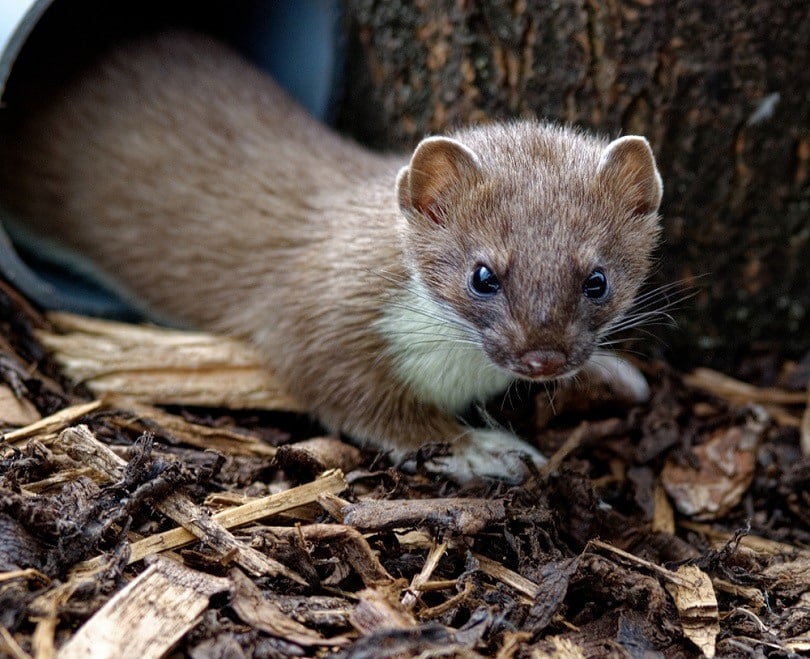
Stoats are small but ferocious little animals and can take on prey up to 20 times their own weight. They are typically found in wooded areas all over North America, and although they are not considered endangered, they have commonly been hunted for their beautiful fur. They feed on a wide variety of prey, including mice, rats, birds, and even rabbits! The stoat’s coat changes color for the winter, and they turn from a reddish-brown with a light brown or cream tummy, to all white except for their tail, which always remains black.
Stoats are highly active animals, making them difficult to keep as pets. They have a ton of energy and can move surprisingly fast, making them difficult to handle.
Personality / Character
Stoats are fiercely territorial animals that are known to be aggressive when threatened. Both males and females are known to bite, so petting or handling a stoat is not easy. If you have raised a stoat from a baby (known as a “kit”), they are easier to tame and less likely to act aggressively, and can thus usually be domesticated in the same way as ferrets.
Stoats prefer to live alone, and in the wild, males and females live separately and will only search each other out in the summer months to mate. Males are highly territorial and mark their territory to keep other males away, and they typically have several dens that they take from prey species like rats and rabbits.
- Related Read: How Many Babies Do Ferrets Have in a Litter?
Feeding & Care 🏥
Stoats mainly feed on small mammals like rabbits and water voles and are highly adept hunters, known for killing prey much larger than themselves with one fast bite behind the head. They also feed abundantly on small rodents and are known to supplement their diet with eggs, fruit, and even insects at times.
Feeding a stoat is not too complicated, and regular organ meats are ideal for this little critter. They are commonly fed with heart, liver, and occasionally mice, supplemented with eggs and small amounts of fruit. Stouts should not be fed with canned cat food, as it does not have the nutritional requirements they need. This is an often-touted substitute to feed a stout, but they need fresh organ meats to thrive.

Suitability 👪
The stoat is rarely found in captivity and is a difficult animal to look after. Keeping stoats as pets is illegal in most states in the U.S., and as such, there are no licensed breeders. This means that any stoats for sale are likely wild-caught specimens and very likely illegal. Another issue is owners not being able to handle the complicated needs of a stoat and releasing them into the wild, which can have a devastating effect on local ecosystems.
 Ferret Overview
Ferret Overview
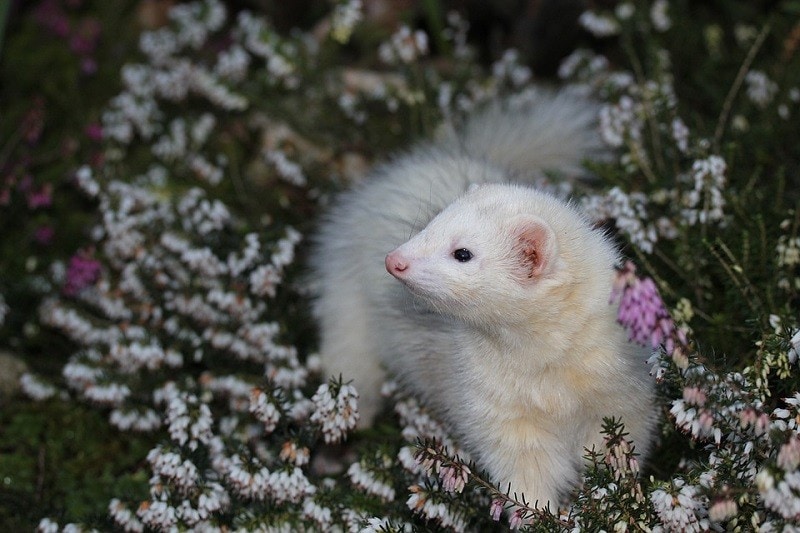
Ferrets are a fair bit larger than stoats and are typically around the size of a small housecat. They have become a popular pet in the United States and are the third most popular pet after dogs, according to the American Ferret Association (AFA). The vast majority of ferrets are domesticated, and there are no wild-caught domesticated ferrets, as they are exceedingly rare. According to the AFA, if a pet ferret escapes captivity, it will only survive a few days in the wild, so it will have little effect on the environment.
Despite the controversy surrounding keeping ferrets as pets, they are not caught from the wild and can live happily in a domestic environment. They are also generally friendly and fairly easy to care for, and they can be compared to a dog or cat.
Personality / Character
Ferrets are full of personality and abundant character and make excellent pets. They are social creatures that love to be around their human family and are surprisingly intelligent and easily trainable. Ferrets are playful and endlessly entertaining little animals that have unique characters and personalities that continue to develop as they grow older.
Ferrets are known to be widely varied in their personality types; some are loners that prefer their own company most of the time, some are exceedingly playful and entertaining, and others are akin to small dogs that enjoy attention whenever they can get it and have tons of affection to give.
Training 🎾
Ferrets are intelligent and highly curious animals that have an incredible capacity for learning. They are easily trained and can be taught basic commands, and they quickly get to know and respond to their own names. Consistent and patient training combined with a few treats are crucial to successfully training a ferret.
It’s common knowledge that ferrets have a habit of biting and nipping, albeit usually playfully, and this is a habit that you want to discourage from as early as possible. Any harsh reprimands or hitting is definitely not the way to fix this habit, and in fact, that will only serve to make it worse. The best course of action is to ignore the behavior as much as possible, and if it gets really bad, give your ferret a “time-out” in a cage away from their family. They will soon learn that this is not an acceptable habit.

Health & Care 🏥
Ferrets are naturally clean animals, but as any ferret owner will tell you, they have a musky odor that never really goes away, even after bathing. Neutered ferrets are usually less smelly, and most domestic ferrets are neutered after weaning and before being sold. Still, bathing should be kept to a minimum; once a month is plenty.
Ferrets, like cats, are obligate carnivores and need a diet high in animal-based protein. Both grains and vegetable proteins can cause digestive issues in ferrets and should be strictly avoided. Small mammals like mice and rats are the ideal diet for a ferret, with occasional treats of chicken or turkey. There are specially made commercial foods for ferrets if you are uncomfortable giving them mice, but these are rather expensive.
Suitability 👪
Ferrets make great pets for older children or adults who are responsible and have the time to devote to their pets. They are generally easy to care for, are quiet and friendly, and bond strongly with their owners. Ferrets do not do well in homes with small dogs or cats, though, as they may view them as prey. Larger dogs are generally fine, but interaction should be carefully supervised. Ferrets do best as the only pet in the home.
 What Are the Differences?
What Are the Differences?
While the two look similar, it’s easy to spot the differences in both appearance and character once you know more about ferrets and stoats. Stoats are smaller, at least half the size of a ferret, are much more energetic and active throughout the day—stopping only to take small naps occasionally—and are rarely kept as pets.
Ferrets, on the other hand, make ideal pets because they are friendly, intelligent, trainable, and bred in captivity rather than wild-caught. Ferrets are also active, but not so much as a stoat, and tend to sleep in longer chunks than stoats. In fact, they are most active during dusk and dawn and are known to sleep most of the day.
Stoats should not be kept as pets, and in fact, the practice is illegal in most of the U.S. This is because they are difficult to care for and not bred in captivity, so any stoats you may come across for sale are likely wild-caught. Ferrets are bred in captivity and make great pets for responsible owners and are easier to care for and far less energetic.
See Also:
- Cavapoo vs Mini Goldendoodle: Differences Explained (With Pictures)
- Labradoodle vs Goldendoodle: The Differences (With Pictures)
Featured Image Credit: Top – ltonini80, Pixabay | Bottom – ambquinn, Pixabay

 Visual Differences
Visual Differences Stoat Overview
Stoat Overview Ferret Overview
Ferret Overview What Are the Differences?
What Are the Differences?